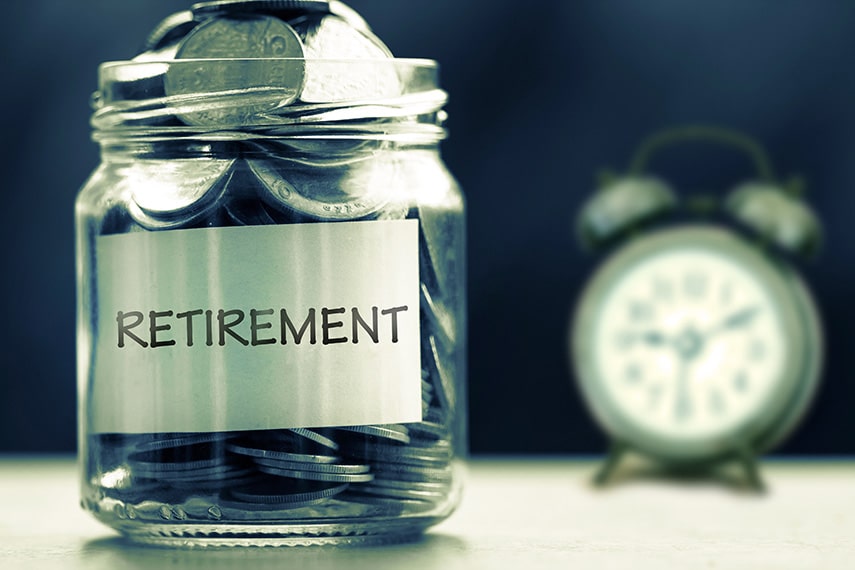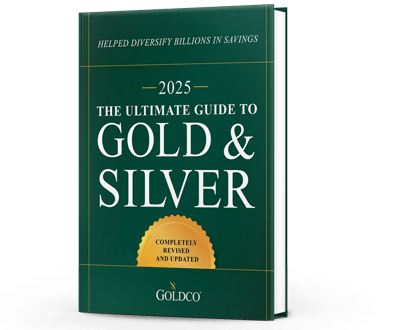Gold IRA Storage At Home: What You Should Know
With everything that’s going on in the world today, Americans are getting more and more nervous about the future The past several years have seen incredible growth in markets, turning many American...
Precious Metals

Millions of Americans, particularly those who work for school districts and government agencies, depend on pension plans for their retirement income. They worked for decades, in some cases accepting lower pay in the hopes that they would receive sufficient benefits in retirement to live just as comfortably as when they were working. Unfortunately, it’s becoming more and more obvious that many pension plans won’t be able to fulfill the promises they made to their workers.
State governments have been among the worst offenders when it comes to funding pension plans. The recent budget crisis in Illinois has brought that issue to light, as pension plans are becoming a major issue there. As states begin to tighten their belts and reduce spending, they look for budget cuts anywhere they can find them. In many cases, the obligations from pension funds for state employees are a major drain on state resources.
In Illinois’ case, the state has a total pension liability of nearly $200 billion, but only has $80 billion on hand to cover those costs. As more and more state employees begin to retire, retirement costs will come due faster. If the government can’t come up with enough money to pay out pension benefits, it will have to make tough choices, which may eventually include cutting pension payments to retirees.
Illinois isn’t the only state facing this predicament, though. New Jersey is in similarly bad shape, with $217 billion in pension liabilities and only $81 billion to cover them. California is even worse shape, with over $240 billion in unfunded pension liabilities and another $125 billion in unfunded healthcare obligations.
Complicating matters is that financial planning on the part of pension funds has often made rosy assumptions about the rate of growth of investments. Assuming high rates of growth ended up leading to underfunding of pensions, as growth rates dropped below assumptions. Currently, many pension funds assume about a 7% rate of annual growth. If that were to fall to 4% then California, for instance, would face about $1 trillion in unfunded pension liabilities.
Given the reality that economic growth has been subpar in the aftermath of the financial crisis and may very well continue on a lower course in the future, the problems with state government pension plans will only get worse. And if another financial crisis hits in the coming years, which it very well might, then state pension plans will face an almost certain catastrophe.
The problem of unfunded pension liabilities isn’t unique to governments, however. Many localities have faced many of the same pension problems, with unfunded liabilities contributing to the bankruptcies of California localities such as Stockton and San Bernardino. While some of those cities have come out of bankruptcy, they had to make significant cuts to their retirees’ health care benefits. And while pension payments have emerged from those bankruptcies unscathed, creditors who purchased pension obligation bonds from localities to enable them to help fund the underfunded pension plans saw significant losses. There’s a good chance that localities won’t be able to count on lenders purchasing those types of bonds in the future.
Many private corporations that go bankrupt are also unable to provide for their employees’ pensions. The federal government created an agency, the Pension Benefit Guarantee Corporation (PBGC) that attempts to provide as much pension benefit as possible to those employees. The reality, however, is that most of those employees will see significant cuts to their pensions and benefits. For instance, PBGC’s multiemployer pension program is expected to reach insolvency in 2025, as it has about $3 billion in assets and $60 billion in liabilities. Its single-employer program is also significantly underfunded.
As the old adage goes, you can’t put all of your eggs in one basket. Just like you don’t want to invest all of your money in a single stock, you shouldn’t place all of your hope in your company or agency pension plan. If the plan goes under, you will be the one losing out.
Diversification is the key to successful investing and maintenance of a solid retirement fund. Diversifying both the types of assets in which you invest and the places through which you invest are key to minimizing your investment risk. Many Americans have found out the hard way the drawbacks of a portfolio that are inadequately diversified.
Those who thought they could depend on Social Security to fund them in retirement realize now that it can’t pay for all of their expenses. Many people who thought their pension plans and retirement benefits would cover them are also discovering that pensions aren’t necessarily guaranteed.
The financial crisis taught many investors that stocks, bonds, and mutual funds aren’t guarantees of diversification either. Putting all your investments into assets that are dependent on the financial health of Wall Street places you at risk during a financial crisis. Is it worth risking your retirement by keeping all your assets subject to the whims of financial markets?
The closer you get to retirement, the less risk you can afford to take with your investments. You need stable investments that will maintain your retirement portfolio’s wealth while still allowing you enough growth to make your assets last through 20-30 years or more of retirement.
The first step, of course, is to make sure that you have enough money to retire on. That requires diligence and effort in making the right savings and investment decisions during your working career. But once you have that nest egg saved up, you need to continue making sound decisions to preserve your wealth. Wealth preservation should be the goal of every retiree or worker nearing retirement.
No better asset exists to preserve wealth than gold. For centuries, gold has served investors as a safe haven and store of value. Even today, countries, central banks, and institutional investors often rely on gold as the ultimate store of wealth because they know that it will weather any crisis.
Gold maintains its value against inflation better than any other. An ounce of gold buys roughly the same amount of goods today as it did 100 years ago, and it will continue to buy that same amount of goods in the future. In terms of wealth preservation, it is unmatched. In times of financial crisis gold even increases in value as investors flock to hold gold as a safe haven.
With a gold backed IRA, investors can benefit from the wealth-preservation properties of gold while simultaneously enjoying the tax advantages of conventional IRAs, such as being able to use pre-tax dollars. That makes it easier than ever for Americans looking for a place to roll over their IRA or 401(k) to keep their assets safe and protected by investing in gold.

